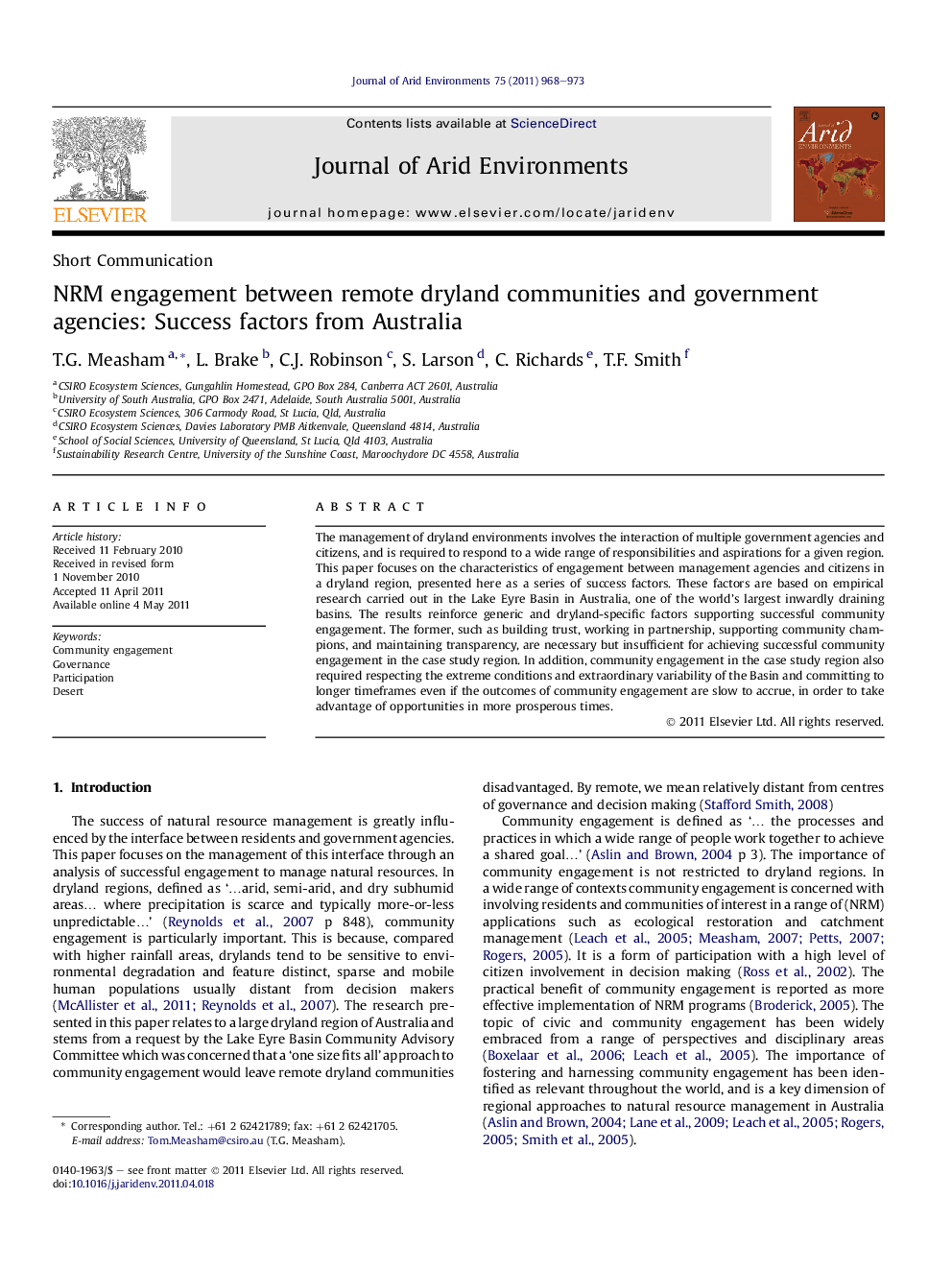| Article ID | Journal | Published Year | Pages | File Type |
|---|---|---|---|---|
| 4393652 | Journal of Arid Environments | 2011 | 6 Pages |
The management of dryland environments involves the interaction of multiple government agencies and citizens, and is required to respond to a wide range of responsibilities and aspirations for a given region. This paper focuses on the characteristics of engagement between management agencies and citizens in a dryland region, presented here as a series of success factors. These factors are based on empirical research carried out in the Lake Eyre Basin in Australia, one of the world’s largest inwardly draining basins. The results reinforce generic and dryland-specific factors supporting successful community engagement. The former, such as building trust, working in partnership, supporting community champions, and maintaining transparency, are necessary but insufficient for achieving successful community engagement in the case study region. In addition, community engagement in the case study region also required respecting the extreme conditions and extraordinary variability of the Basin and committing to longer timeframes even if the outcomes of community engagement are slow to accrue, in order to take advantage of opportunities in more prosperous times.
